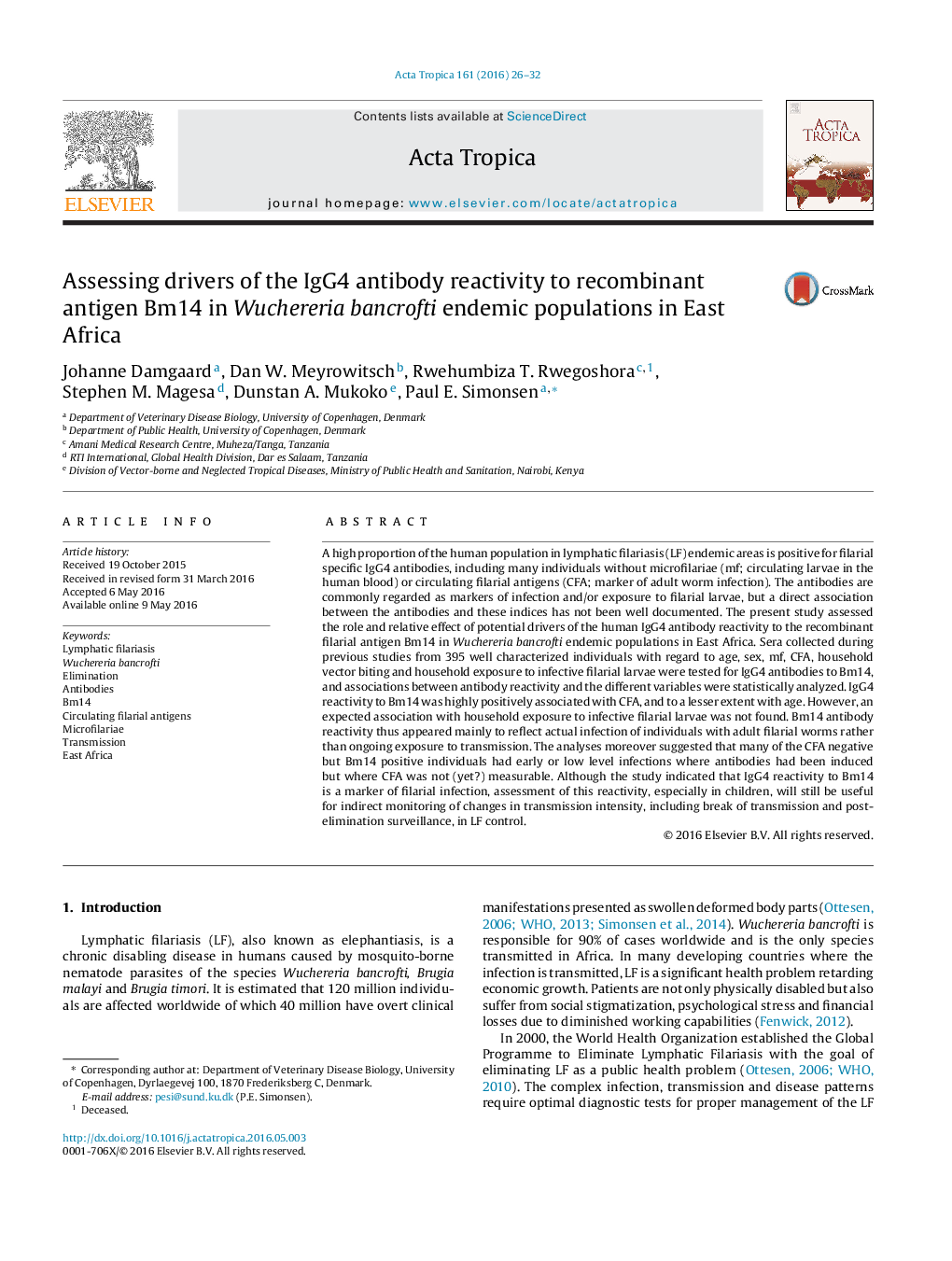| کد مقاله | کد نشریه | سال انتشار | مقاله انگلیسی | نسخه تمام متن |
|---|---|---|---|---|
| 3393722 | 1592763 | 2016 | 7 صفحه PDF | دانلود رایگان |

• IgG4 reactivity to recombinant filarial antigen Bm14 assessed in LF endemic populations.
• Association to age, gender, mf, CFA and parasite exposure analyzed.
• Strong significant positive association with CFA, less with age.
• No association with household exposure to infective filarial larvae.
• Assessed reactivity can be useful for monitoring transmission during LF control.
A high proportion of the human population in lymphatic filariasis (LF) endemic areas is positive for filarial specific IgG4 antibodies, including many individuals without microfilariae (mf; circulating larvae in the human blood) or circulating filarial antigens (CFA; marker of adult worm infection). The antibodies are commonly regarded as markers of infection and/or exposure to filarial larvae, but a direct association between the antibodies and these indices has not been well documented. The present study assessed the role and relative effect of potential drivers of the human IgG4 antibody reactivity to the recombinant filarial antigen Bm14 in Wuchereria bancrofti endemic populations in East Africa. Sera collected during previous studies from 395 well characterized individuals with regard to age, sex, mf, CFA, household vector biting and household exposure to infective filarial larvae were tested for IgG4 antibodies to Bm14, and associations between antibody reactivity and the different variables were statistically analyzed. IgG4 reactivity to Bm14 was highly positively associated with CFA, and to a lesser extent with age. However, an expected association with household exposure to infective filarial larvae was not found. Bm14 antibody reactivity thus appeared mainly to reflect actual infection of individuals with adult filarial worms rather than ongoing exposure to transmission. The analyses moreover suggested that many of the CFA negative but Bm14 positive individuals had early or low level infections where antibodies had been induced but where CFA was not (yet?) measurable. Although the study indicated that IgG4 reactivity to Bm14 is a marker of filarial infection, assessment of this reactivity, especially in children, will still be useful for indirect monitoring of changes in transmission intensity, including break of transmission and post-elimination surveillance, in LF control.
The role and relative effect of potential drivers of the IgG4 antibody reactivity to recombinant antigen Bm14 was assessed in well characterized individuals from lymphatic filariasis endemic areas in East Africa.Figure optionsDownload as PowerPoint slide
Journal: Acta Tropica - Volume 161, September 2016, Pages 26–32